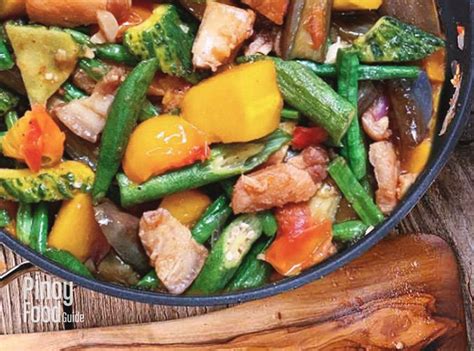Tagalog Food: A Culinary Journey Through the Philippines
The Philippines, an archipelago of over 7,000 islands, boasts a vibrant and diverse culinary landscape. Tagalog cuisine, representing the largest ethnic group in the country, forms a significant part of this rich tapestry. This blog post will guide you through some classic Tagalog recipes, highlighting their unique flavors and ingredients. Prepare to embark on a delicious adventure!
Understanding Tagalog Flavors
Tagalog cooking is characterized by a delightful balance of savory, sweet, sour, and spicy flavors. Common ingredients include:
- Rice: The staple food, often served with every meal.
- Vinegar: Used extensively to add tanginess to dishes.
- Soy sauce: Provides a salty and umami depth.
- Garlic: A fundamental aromatic element.
- Ginger: Adds warmth and spice.
- Onions: Another crucial aromatic base.
- Chilis: Bring the heat, ranging from mild to fiery.
- Coconut milk: Contributes richness and creaminess to many stews and curries.
- Fish sauce (patis): A potent flavor enhancer.
Popular Tagalog Dishes and Recipes
Let's dive into some iconic Tagalog dishes you can easily make at home.
1. Adobo: The National Dish
Adobo is arguably the most famous Filipino dish, and its Tagalog variations are plentiful. This recipe provides a basic version, but feel free to experiment with different ingredients and levels of spiciness.
Ingredients:
- 1 lb chicken (thighs and drumsticks are ideal)
- 1/2 cup soy sauce
- 1/4 cup vinegar
- 4 cloves garlic, minced
- 2 bay leaves
- 1 teaspoon black peppercorns
- 1-2 tablespoons brown sugar (optional, for sweetness)
- Vegetable oil
Instructions:
- Marinate chicken in soy sauce, vinegar, garlic, bay leaves, and peppercorns for at least 30 minutes (longer is better).
- Heat oil in a pot or pan. Brown the chicken pieces on all sides.
- Add the marinade to the pot. Bring to a boil, then reduce heat and simmer until the chicken is tender (about 30-40 minutes).
- Add brown sugar (optional) during the last 10 minutes of cooking.
- Serve hot with steamed rice.
2. Sinigang: The Ultimate Sour Soup
Sinigang is a Filipino sour and savory soup, with countless variations depending on the region and the souring agent used. Here's a recipe using tamarind paste, a popular choice.
Ingredients:
- 1 lb pork ribs (or beef, seafood)
- 1 cup tamarind paste (dissolved in 4 cups water)
- 1 onion, chopped
- 3 cloves garlic, minced
- 1 inch ginger, sliced
- 1 cup long beans, cut into 2-inch pieces
- 1 cup kangkong (water spinach), roughly chopped
- Salt and pepper to taste
Instructions:
- In a large pot, combine pork ribs, tamarind broth, onion, garlic, and ginger. Bring to a boil.
- Reduce heat and simmer until the pork is tender (about 45-60 minutes).
- Add long beans and continue to simmer for 10 minutes.
- Stir in kangkong and cook for another 5 minutes, until wilted but still slightly crisp.
- Season with salt and pepper to taste.
- Serve hot with steamed rice.
3. Pancit: Noodles of Many Forms
Pancit, meaning noodles in Tagalog, encompasses a vast array of noodle dishes. This recipe features a simple but flavorful stir-fried pancit.
Ingredients:
- 1 lb pancit noodles (any type you prefer)
- 1/2 lb ground pork or chicken
- 1 onion, chopped
- 2 cloves garlic, minced
- 1/2 cup cabbage, shredded
- 1/4 cup carrots, shredded
- Soy sauce to taste
- Vegetable oil
Instructions:
- Cook noodles according to package directions. Drain and set aside.
- Heat oil in a wok or large pan. Sauté garlic and onion until fragrant.
- Add ground meat and cook until browned.
- Add cabbage and carrots. Stir-fry until slightly softened.
- Add cooked noodles and soy sauce. Stir-fry until well combined and heated through.
- Serve hot.
Exploring Beyond the Basics
This is just a starting point. Tagalog cuisine offers countless other delicious dishes to discover, from kare-kare (peanut stew) to inihaw (grilled meats) and lumpia (spring rolls). Experiment with different ingredients and techniques to find your favorite Tagalog flavors. Enjoy your culinary journey!
